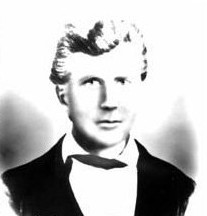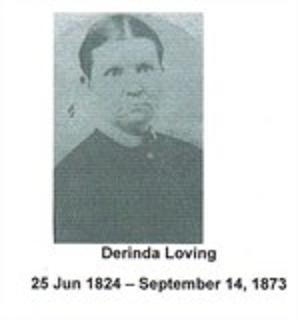About Us and Longhorns
Tio Benito is 'Uncle Ben' in Spanish.
My Sister and Brother-in-law allowed me onboard for their daughter, Nell's upbringing, and for that blessing I am forever grateful .... Thirty years have flown by & "Uncle Ben" became my most common title, or how she characterizes it, "Tio Benito". I have Branded my longhorn herd upon that Characterization, regardless of the fact she is kind, charming, brilliant, ...a MS in Clinical Psychology and her PhD in Neuropsychology at The University of Texas. I have gone by "Uncle Ben" to a whole generation of her friends.
First called Uncle Ben by my niece, Elizabeth, my (late) Brother Boyd's daughter, circa, early 80's, Elizabeth, bright and accomplished in her own right, the strong mother of 2 magnificent daughters, Madison and Liv, still refers to me as, "Uncle Ben". Bringing it to date, Madison is Uncle Ben's No. 1 hunting partner, and Elizabeth, Liv and Maddie share family time throughout the year with my wife, Brenda and their Uncle Ben. Having been referred to as Uncle Ben for four decades, forever cherished by this soul... "Tio Benito",.... is one of the best things, this man could ever be.
A memorable part of my youth was spent 5 minutes from my fathers tractor shed hunting on Sam Countiss' Rancho Seco, which shared miles of fenceline with M. P. Wright's Ranch housing his famous herd of Texas Longhorns. Even though we were just on the other side of the fence, we rarely saw Texas Longhorns anywhere during the 1950'S and 60'S. Mythic as they were legendary, it was with awe that we witnessed them doing their part in John Wayne's movie "The Alamo"(1960). Everyone in farming and ranching from South Texas knew M. P. "Chico' Wright III raised Longhorns...but no one could tell you why. Little doubt, three generations removed, Chico Wright was raised recognizing The Longhorn's abilities; they had survived unassisted by man, developed unbelievable fertility and longevity, and could forage for themselves like no other breed known to man. In the late 1890's, Wright's grandfather, M. P Wright, had kept the Texas Longhorns he put aside at his slaughterhouse and decided to raise them exclusively. The Wrights are one of the "Seven Original Families" credited with saving the Longhorn.
Having spent all my summers in High School working in fields, grain elevators and cotton gins, I followed a path to get away from farming and ranching by the time I graduated from college. A decade later, prospecting the garment districts of LA and New York City, I began to develop a relationship with my rural upbringing. On planes and in hotel rooms I started devouring material like Trail Drivers of Texas, Life on The King Ranch, Great Roundup, J. Frank Dobie's fabulous books The Longhorns and A Vaquero of the Brush Country, and later, T. J. Barragy's Gathering Texas Gold. I was left with a new appreciation for my own backyard, South Texas, its history, wildlife, ranching heritage and geography. Those accounts left a lasting impression; Texas Longhorns were not just majestic in appearance, but admirable with unique character and qualities that hold timeless value, shaped over the centuries making a living in the most severe environments. This animal like no other had not only been shaped, but had been a major player in shaping the history and character of the state of Texas and the cattle business. I had just experienced a delayed arrival to a well established reality.
John and Rose Mary Floyd befriended me as I visited their 'San Patricio Trading Company' around 1997. They had for 30 plus years been raising Longhorns and John had great stories to share about his friends Leonard Stiles and the famous Graves Peeler which shined a "colorful" reality over the whole business of raising Texas Longhorns. Being around Longhorns certainly had a gripping allure, creating that desire to have some of my own. I have been blessed to gather a few head and be infected with the Texas Longhorn "Bug" --- a form of addiction.
"They asked him where he'd like to be and his dear ol' voice did Ring...
I'd like to be in Texas, for the roundup in the Spring"
- FROM THE OLD SONG : "THE ROUNDUP IN THE SPRING
A TEXAS LONGHORN LEGACY...
IN HONOR OF MY GREAT, GREAT, GREAT GRANDMOTHER'S BROTHER, OLIVER LOVING.


Texas Longhorns evolved during the 16th thru the 19th centuries in the wild, originally Portuguese and Spanish cattle that went feral in early efforts to settle Texas. Upwards of 4,000,000 to 6,000,000 were running wild in Texas after the Civil War. Qualities of resourcefulness, disease resistance, and endurance were developed in the wild over the centuries. They could birth and raise a calf on their own. Up the trail, they had developed legs to walk from South Texas to Kansas, New Mexico, Nebraska, Colorado and beyond. Considered some of the finest mothers in the animal kingdom, their unique traits should be preserved as we strive toward producing the longest horns "heaven will allow".
When Texans returned home from the Civil War, they must have felt forsaken in a land for which they had given everything, only to lose an economy and have little job opportunity. The South was devastated in war and politics by invaders, but Texans only had to look across the landscape to see that God's Providence had been moving hundreds of years toward that moment. For in the evolution of the Spanish/Portuguese/Moorish/Mongrel cattle that had gotten lose in the country that came to be known as Texas (and California), survival over time and the elements had molded millions of "scrub cattle" like no other; they could make a 1000 mile journey up the trail and flourish along the way. A new character, The Cowboy, emerged out of this, engaging in a "great gatherin", driving thousands at a time over long trails to the railheads in Kansas. From 1867 to 1890 it is estimated that in excess of 10,000,000 head were driven up trail. No other cow could have made the trip. And as a result of all this work and The Texas Longhorn, cattle raising was transformed from a farming/sustenance level, to a massive ever vibrant and challenging cattle industry in the Greater Western part of our country--Texas, Oklahoma, Kansas, New Mexico, Colorado, Nebraska and beyond.
As time went on, man forgot just what had been provided and the forsaken ones became the Texas Longhorns. A Longhorn could carry a tick that its strongly developed immune system had overcome, yet other cattle breeds were devastated by that tick; "'improved'" breeds died of Cattle Tick Fever which made the carrier very unpopular. Furthermore, the Longhorn was a lean animal in a day where, ... along with hides for leather and meat as a byproduct (before refrigeration),... the value of a cow was driven by the amount of tallow it produced for lighting (candles) and soap. It's really a myth about the meat being too tough, feed them out and age them like any other beef cow and you'll realize that quality is prime and much better for you.
By the end of the century, crossed with 'improved breeds' and/or taken to slaughter, they were essentally breed out of existence, and almost went extinct. No wonder someone wrote the lyrics,
"I'm gonna leave ol' Texas, Now
They got no use for the Longhorn Cow".
Thank God someone's eyes were open enough to keep that from happening. It was predicted, "One of these days, we are going to need those cattle", ... and why not now, when appreciation for lean meat, asset life, time of production, pasture utilization and feed bills are at a premium.
When I see a Texas Longhorn, I find them to be a beautiful animal and their twisty horns are a living and enduring symbol of the Old West, but their story and their attributes reflect universal appreciation for intelligent design, resourcefulness, perserverance and God's provision. Through all the cross breeding and outbreeding with other breeds between 1880 through the early 1900s, Texas Longhorns should be recognized, a bedrock of American cattle breeding.

Graves Peeler moving his herd on his ranch in McMullen County for pictures for advertising
at the request of "Mr. Bob" Kleberg of the King ranch.
___________________________________________________________________________________________________________________________
Consider Texas Longhorns For:
Lean Meat
The breed produces naturally less fat and lower cholesterol for today's health conscious public.
Longevity
Texas Longhorns breed well into their teens. More live calves over the years mean more dollars.
Browse Utilization
Less supplemental feed is needed because the cattle take advantage of the forage available.
Disease/Parasite Resistance
A natural immunity developed over the centuries means fewer veterinarian bills and less maintenance for today's cowman.
Reproductive Efficiency
Large pelvic openings and low birth weights result in live calves. Busy cattlemen can say "goodbye" to sleepless nights.
Docility
Longhorn cattle are intelligent, easy to work and to handle.
Adaptability
The breed thrives in climates from the hot, damp coastal regions to the harsh winters of Canada.
Hybrid Vigor
Heritable quality enhances your present breed and gives you a new genetic pool
__________________________________________________________________________